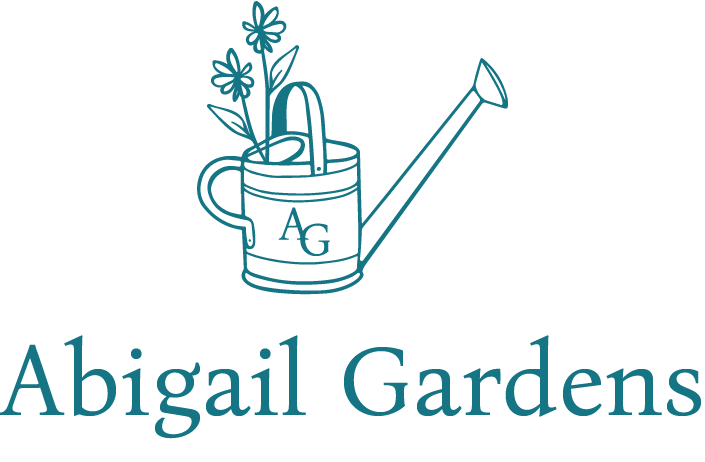Elements of a Cottage Garden
Do you dream of having an overflowing, magical garden like something out of a fairy tale? Do you imagine the sharp contrast of foxglove and climbing sweet pea set against a white picket fence while the sound of happy, buzzing bees fill the air? Can you hear the soft patter of your feet on stones lined with fuzzy moss and creeping thyme while your hands drift along colorful cut flowers just begging to be arranged on your countertops? This dream has a name, and it is the irresistible cottage garden.
If you want to turn this dream into a reality, let me walk you through some of the key elements of a cottage garden. Historically, cottage gardens are functional as well as beautiful, so this means having vegetables and herbs tucked into your lovely annuals and perennials. In this way, it is less traditional and maintained than a classic English garden.
Notice the pathway, brick border wall, and clear seating option set amongst the wild, overflowing beds.
Step One: Establish a base structure for your garden, walkways, and maybe a central focal point. The base structure can be achieved with a border provided by a fence (bonus points if it’s white or with reclaimed wood), a wall, and with shrubs like hydrangeas, butterfly bushes, or maybe boxwood. Pea gravel, stones, and reclaimed wood are great options for the much needed pathways through your space so you and your guests can walk through and appreciate the abundant beauty. A good central focal point is not always necessary, but it could be a fountain, fire pit, or a seating area. Planning the hardscape first is important so it doesn’t become a weak point in your garden later on.
Such stunning colors and layers with a blue fence border and bird bath focal point!
Step Two: Prep your beds! This can be a chore depending on what you are starting with (I can hear the groans from here as you stare at a large expanse of grass and weeds). Trust me it can be done, and you will thank yourself later if you do it correctly the first time! Some people, myself included, have used the tarp/black plastic method. Simply cover the space you have designated as a bed with black plastic for 4-6 weeks. This kills the grass and helps eliminate any pesky weed seeds lying dormant in the soil. After you remove the tarp, break up the grass clumps, amend your soil, and voila! Another option, and frankly even easier to do, is covering the grass and weeds with layers of cardboard and newspapers and then piling soil and mulch on top. This kills the grass and weeds while having the added benefit of not disrupting the amazing (and very important!!) soil life.
There is so much beauty in this photo it is hard to know where to look first! Notice the stone pathway, differing plant layers and colors, and climbing plants along the brick wall.
Step Three: Fill the space with organized chaos. Yes, you read that correctly! A cottage garden is a whimsical, overflowing, colorful space with many differing height layers. Something should always be blooming. You can achieve this by having a good mix of perennials and long lasting annuals. Some classic blooms include love-in-a-mist, snapdragons, foxglove, peonies, daisies, and pansies. Think of what brings up memories of your grandmother’s garden…that is the vibe we are going for! It is also important to remember that a cottage garden should not be too much work. So what plants bring you joy, but are not too fussy? What blooms for a long time? What self-sows for the next year? Adding roses can add a romantic touch, but try to choose one that isn’t too difficult to take care of. The old-fashioned climber ‘Blaze’ is a perfect option. Other climbing plants such as wisteria and sweet pea are a must in a classic cottage garden as they can help add depth.
Not every plant needs to flower! Adding some interesting foliage can help balance your garden, fill in any holes, and provide a beautiful filler for any arrangement you might make. Lamb’s ear silvery, fuzzy leaves add an interesting element. Similarly, blue fescue adds a stunning pop of silvery- blue which can help your flowers stand out even more. Baby’s Breath and Coleus are intriguing in a garden and can also make great fillers for arrangements.
Lastly, it is important to remember that this garden should be functional! Plant some herbs that you love to cook with such as sage, thyme, oregano, and rosemary. Lavender is always lovely to have access to and the bees will thank you. Echinacea or purple coneflower is a stunning addition to any garden and has medicinal properties. Maybe add your favorite vegetable like squash, kale, or lettuce. Did you know that okra forms tall stalks with stunning hibiscus-like-flowers (fun fact: they are in the same family)? Those could be exciting to have in the back against a border, but ideally somewhere you can also pick the okra!
There is a purposeful design of plant heights happening here! They put the tallest in the back and then tapered toward the front.
I hope this post can help inspire you to create your own magical cottage garden. This whimsical and partly wild space is a great way to inspire creativity, meditation, and relaxation: things I am sure we would all love more of in our lives.
Happy planting!
-Lauren Saurs





